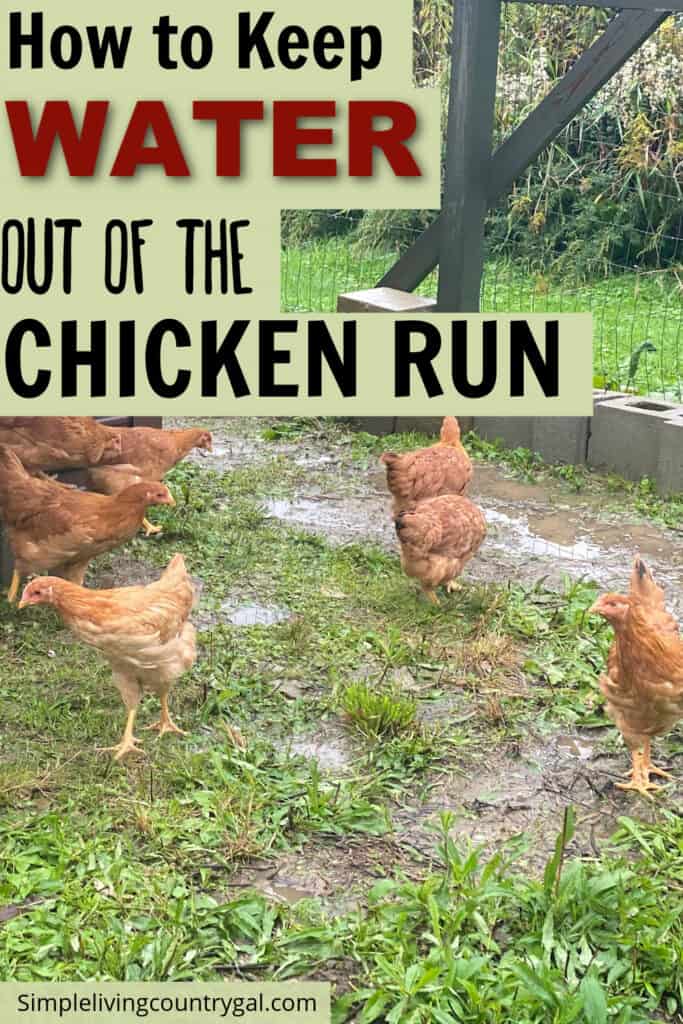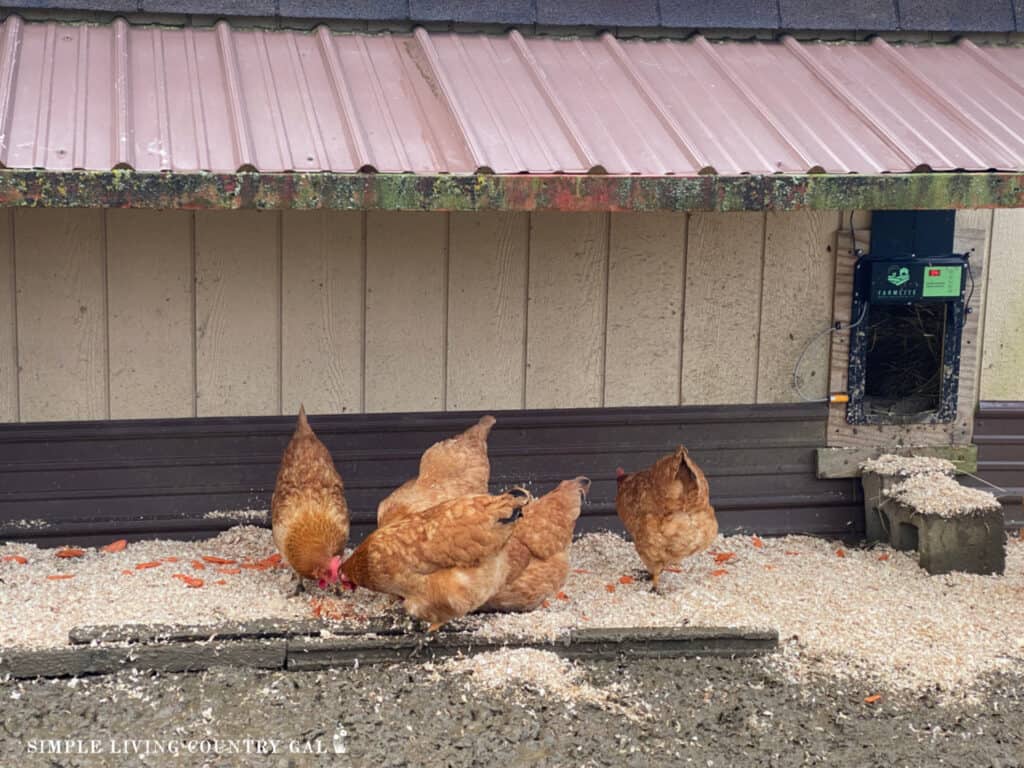how to keep chicken run dry
Having mud or wetness in a run can lead to dirty eggs and an unhealthy flock. Here are tips on how to keep a chicken run dry so you can create a healthier environment.
Use this list as a starting point for raising chickens that have strong immune systems so they can fight off diseases more easily.

If you’ve ever had chickens in your backyard, then you know how important it is to keep their area dry and free of standing water. A wet run is not only inconvenient but also unhealthy for your birds—it can lead to such ailments as bumblefoot and coccidiosis, which can threaten the quality of your flock. With a bit of planning and effort, you can make sure that your chicken run remains dry no matter what Mother Nature throws at it. Let’s look at practical tips on how to ward off moisture while still providing a safe place for chickens to roost and play in all weather conditions.
What is bumblefoot?
Bumblefoot is an infection caused by wetness and poor hygiene in the run. It is characterized by a red, swollen lump on the bottom of the hen’s foot that can be painful and even cause lameness. To prevent bumblefoot, chickens must have access to dry ground or bedding at all times.
To treat bumblefoot in a chicken:
- Soak the affected foot in Epsom salts to help draw out the infection.
- Clean the foot to soften up the tissue.
- Finish with a spray to kill bacteria.
How to Keep a Chicken Run Dry
Try some or all of these tips to help keep the area outside of your chicken coop dryer and more pleasant for your flock.
- Make sure the run is built in a dry, sunny spot that gets plenty of drainage and airflow.
- Use absorbent bedding such as wood chips, shredded paper, or straw to soak up moisture. Replace the bedding regularly so it doesn’t get too wet or smelly.
- Install a mesh cover over the run to protect chickens from rain and snow.
- Keep an eye on the ground for signs of standing water, and re-grade or add drainage channels if needed.
- Use grit and sand in the coop to help dry out wetter areas.
- Consider adding a small roof over the door of the coop to protect against rain.
- Make sure your chickens always have access to a dry dust bath, as this helps them stay dry and healthy in wet weather.
- Monitor your chicken’s health closely so you can catch any issues before they get out of hand.
Harris Farms Free Range Hanging Poultry Feeder | Twist Lock Base | 10 Pound,WhiteManna Pro Fresh Flakes | Chicken Coop Bedding | Pine Shavings for Chicken Bedding | 4 Cubic Feet
Morhome Chicken Coop Large Wooden Outdoor Bunny Rabbit Hutch Hen Cage with Ventilation Door, Removable Tray & Ramp Garden Backyard Pet House Chicken Nesting Box
CheeFun 6Packs Chicken Toys Set: Chicken Coop Toys with Chicken Swing Xylophone Mirror for Hens Bird Parrot
My preferred solution for a wet chicken run is wood chips. Not only does it provide an effective barrier between your chickens and water in a run, but chickens love to scratch in it, encouraging the matter to compost down more quickly.
How to add drainage channels to a chicken run.
If you live in an overly wet area, you may want to consider installing channels to give the excess water somewhere to go.
- Dig a shallow trench or channel around the perimeter of the run.
- Add gravel or small rocks to fill in the bottom of the trench, creating a layer of drainage beneath the surface.
- Cover this with mesh or another material that will allow water to flow freely into the trench without clogging it up with debris.
- Connect the trench to a drainage pipe that will carry the water away from the run.
- Test out your new drainage system by filling it with water and observing where it goes. Make sure it is not flowing back into the chicken run before adding bedding or chickens!
- Consider placing small mounds of dirt around the perimeter of the run to help direct water away from the chickens and into the drainage system.
- Add bedding over the top of your newly created drainage system, and you are all set!
With a few simple steps, you can create a dry and safe environment for your chickens, even in wet weather. With a little bit of planning and preparation, you can ensure your chickens stay healthy and happy all year round.

Other tips for keeping your chicken run dry
- Make sure the area is well-drained and slopes away from areas where chickens are kept or roosting. Runoff water should always be directed away from the coop to avoid pooling near your birds.
- If possible, place your chicken run in an area that avoids standing water and puddles.
- Lay down a tarp or other waterproof material on the ground before adding bedding to help keep moisture out of the enclosure.
- Add plenty of absorbent bedding such as straw or wood shavings to your chicken coop, nesting boxes, and the run itself. Not only will this keep your chickens warm and dry, but it also helps absorb odors.
- Consider adding heavy-duty plastic sheeting above the chicken run to help deflect rainwater away from the birds’ living space.
- Keep vegetation around the coop trimmed back so water does not accumulate near the enclosure’s walls.
- If your chicken run is near a water source, consider adding a fence or barrier to keep birds away from potentially dangerous areas.
- Inspect the area regularly and adjust bedding, drainage systems, and other elements as needed to ensure your chickens stay safe and dry in all weather conditions.
- Consider investing in products such as rain covers or tarps to cover the run when wet weather is predicted.
- Always check on your chickens during bad weather and make sure their area is still dry and safe.
By following these tips, you can help keep your chicken coop and run dry in even the wettest of conditions! With some thoughtfulness and preparation, it doesn’t have to be a struggle to keep your backyard chickens in the best possible environment. After all, happy chickens are healthy chickens! If you’re looking for more advice on keeping your birds safe and healthy, consider consulting a professional poultry expert or experienced chicken keeper. They can help provide additional guidance and tips to ensure that your flock is living their best life.




